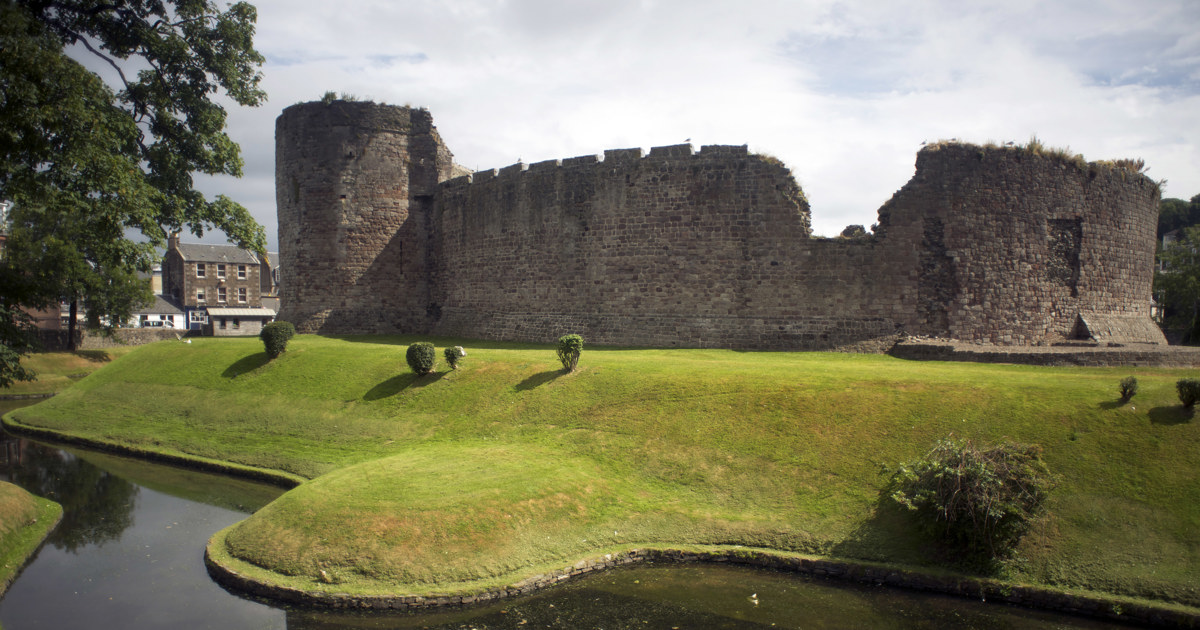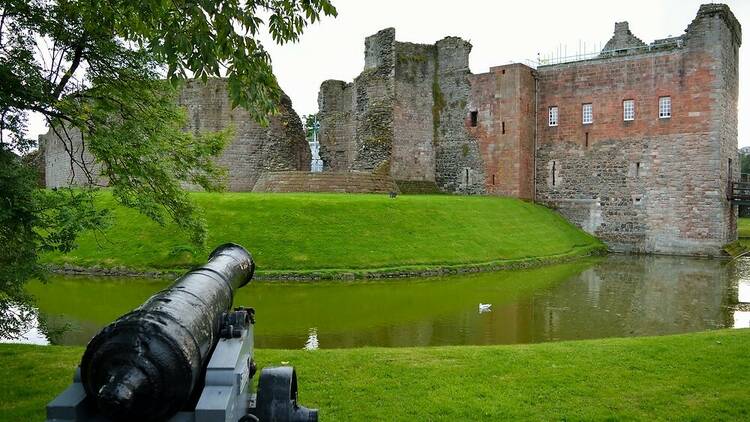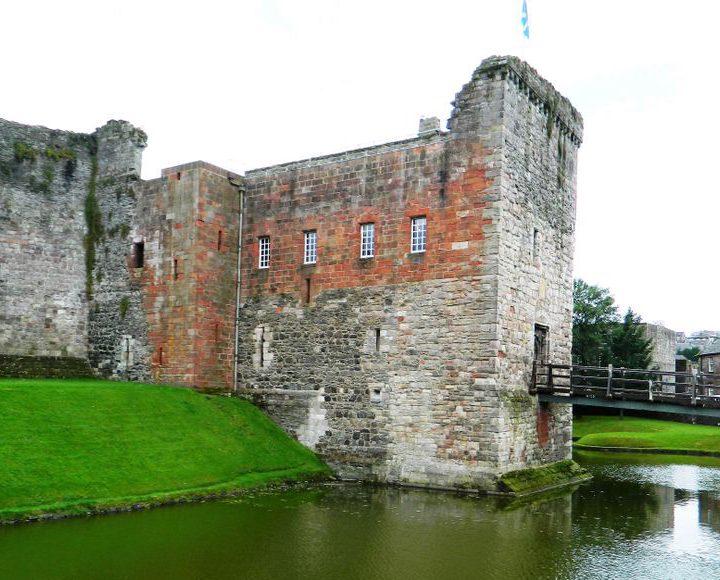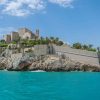Rothesay Castle
Rothesay Castle stands as a testament to the rich history and architectural evolution of Scotland. Located on the Isle of Bute, this medieval stronghold has witnessed numerous historical events and transformations over the centuries. Renowned for its distinctive circular design and formidable fortifications, Rothesay Castle offers a fascinating glimpse into the past. It captivates historians, architects, and visitors alike.
Location of Rothesay Castle
Situated in the town of Rothesay on the Isle of Bute, Rothesay Castle enjoys a strategic position that has historically contributed to its defensive significance. The Isle of Bute nestles in the Firth of Clyde, off the western coast of Scotland. The castle’s location in Rothesay places it within the picturesque surroundings of the island, characterized by its lush landscapes and scenic vistas. This idyllic setting not only enhances the castle’s aesthetic appeal but also underscores its historical role as a key defensive and administrative center.

History of Rothesay Castle
Rothesay Castle dates back to the early 13th century. Alan, the High Steward of Scotland, directed its construction to defend against Norse incursions. The castle’s unique circular plan, rare for Scottish castles, likely drew inspiration from French architectural styles, reflecting broader European trends of the time.
Throughout its history, Rothesay Castle has played a pivotal role in Scotland’s turbulent past. In the 13th century, Norse forces led by King Håkon IV of Norway besieged the castle, marking a significant event in the ongoing conflicts between Scotland and Norway. Despite these attacks, the castle remained a crucial stronghold. Successive generations of the Scottish nobility later expanded and fortified it.
The 15th century saw modifications under the Stewart kings, who used the castle as a royal residence. During this period, the castle’s defenses were strengthened. Additional buildings, including a great hall and residential quarters, were constructed within the courtyard. However, the castle’s fortunes declined during the late 16th century. It suffered damage from various conflicts and fell into a state of disrepair.
By the 17th century, Rothesay Castle had lost much of its strategic importance and was partially dismantled during the Wars of the Three Kingdoms. Efforts to restore and preserve the castle began in the 19th century, reflecting a renewed interest in Scotland’s medieval heritage. These restoration efforts were instrumental in stabilizing the remaining structures and protecting the site for future generations.

Current status
Visitors can explore the castle’s impressive ruins, including the circular curtain wall, moat, and gatehouse remains. Interpretive displays and informative plaques provide insights into the castle’s storied past. These allow visitors to appreciate its architectural and historical significance.
The central keep features robust stone walls and commanding views of the landscape. Additionally, it remains one of Rothesay Castle’s most striking features. The well-maintained grounds and tranquil moat enhance the visitor experience. These offer a peaceful retreat amidst the echoes of history. Furthermore, special events and guided tours frequently engage the public and foster understanding of Scotland’s medieval heritage.
In conclusion, Rothesay Castle embodies the architectural ingenuity and historical complexity of medieval Scotland. It also serves as a vibrant cultural hub today. Whether you are a history enthusiast, architecture aficionado, or curious traveler, a visit promises a rewarding experience.
Admission
Community features
Castle features
Video
Location
Official website
Featured listings














